#amelanistic
Text


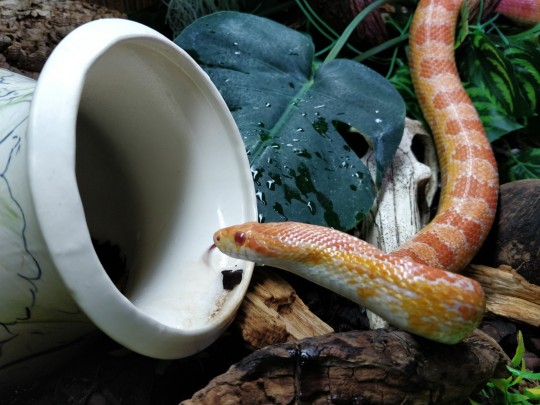
Look at this precious creature
72 notes
·
View notes
Text

Haha ooops
#herp derp#reptiblr#boa constrictor#corn snake#boa constrictor imperator#amelanistic#they were both on my list for educational animals and both breeders gave me huge discounts for being a zoo employee#with pro animal care experience#and I have so many supplies at this point I knew I could throw together quarantine enclosures EASY. so oops#did not intend to buy at expo today. bought two. ain’t that just the way
4 notes
·
View notes
Text

Meet Polaris the amelanistic corn snake!
She's still a baby, and she's so TINY!
1 note
·
View note
Text
Amelanistic corn snake saint!


124 notes
·
View notes
Text

#snake#snakes#reptile#reptiles#reptiblr#corn snake#corn snakes#corn snake morphs#baby snake#amelanistic corn snake#rf23#rf23m1
62 notes
·
View notes
Text
Dark Orange f2 does contain amels! Will be separating, counting and photographing them later today. Expect an update soon! <3
3 notes
·
View notes
Photo

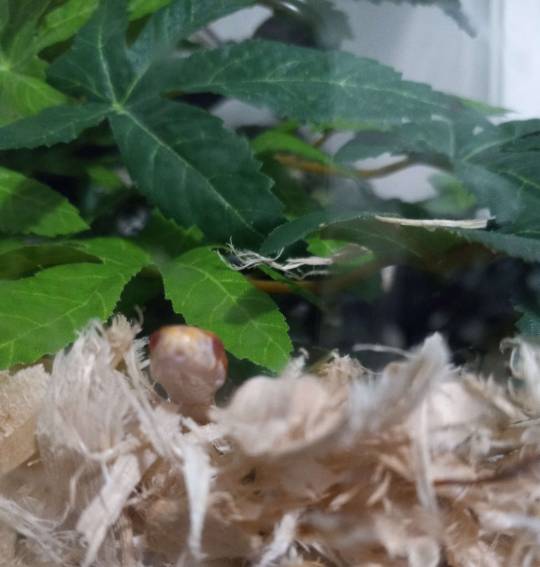

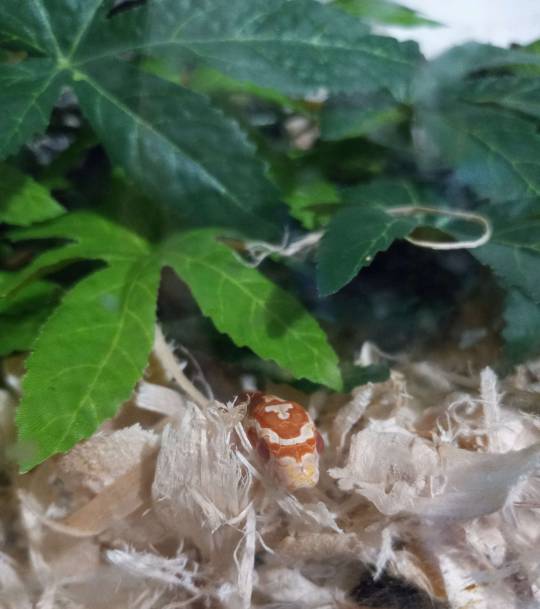
“hi hello can i perhaps interest u in providing me an foob???”
it’s not feeding day, Aldia, don’t look at me like that
#Aldia#reptiblr#corn snake#amelanistic corn snake#i was over by the shelf his tank is on and glanced up at just the right angle to notice that the aspen had a face lmao
2 notes
·
View notes
Text

Acorn Woodpeckers (Melanerpes formicivorus), family Picidae, order Piciformes, CA, USA
The individual on the right is amelanistic.
Photograph by Mark Rauzon
1K notes
·
View notes
Note
Is there a known reason albinism doesn't negatively impact snakes the way it does mammals?
It genuinely comes down to basically using the same name for two different things.
The majority of mammals only have one pigment, and it's melanin. Melanin in mammals is important to how the eye develops, so albinism is known for absolutely just messing up mammals' eyes. It's not simply that albino mammals have light-sensitive eyes, the abnormal eye development also means there's difficulty with focusing the eye, depth perception, and there's often generally poor vision. Their eyes aren't just sensitive, either, albino eyes have very poorly-developed rods and cones and extended exposure to birght light can actually cause the death of eye cells. Albinism in mammals is also tied to hearing loss or hearing disorders as melanin can effect internal ear development as well. Because melanin is the only pigment most mammals have, when it's gone, it winds up messing with a lot of things.
That's just not the case in snakes. Along with melanin, snakes also have yellow and red pigments - thats why "albino" snakes often look yellow. The lack of melanin has absolutely no effect whatsoever on how snakes' eyes and ears develop. The effect is almost entirely cosmetic, aside from the lack of pigmentation in their eyes, which does make their eyes more sensitive to bright light but not anywhere near the extent in albino mammals.
It's more technically correct to refer to "albino" snakes as amelanistic (with no melanin) or hypomelanistic (with decreased melanin production), because "albino" has an implication that doesn't really follow through in snakes.
419 notes
·
View notes
Text
Chromie bein Aesthetic

1 note
·
View note
Text
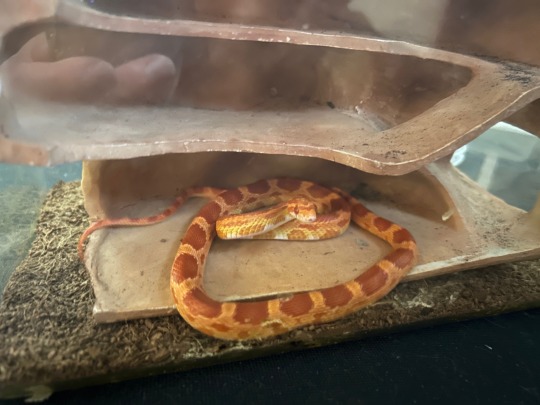
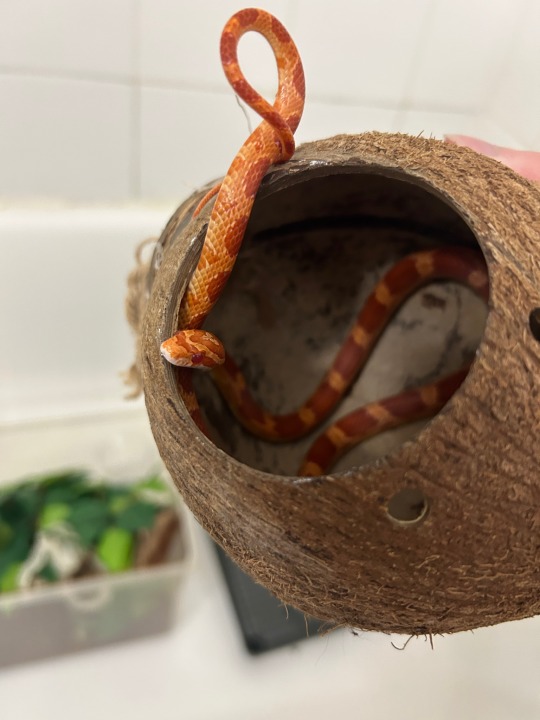
UPDATE: ADOPTION PENDING
FOR ADOPTION IN THE US: FANTA, CORN SNAKE (Pantherophis guttatus)
Fanta, my foster snake is ready to begin looking for their new home. Fanta is a young unsexed amelanistic corn snake. Exact age is unknown but they are not full grown. They have had 3 meals with me and are an enthusiastic feeder eating a frozen fuzzy mouse every 7-10 days. They were purchased as a birthday gift for someone who wasn’t ready for snake ownership.
Fanta is free with proof of a good setup. They are available for pickup/delivery within an hour of Minneapolis, MN or can be shipped to your nearest fedex hub for the cost of shipping (usually about $60-70) weather permitting.
They have shown no signs of illness, parasites, or injury. As they are a young corn snake from an unknown background they will need some time to get comfortable with you and feel comfortable being handled. They are very curious and wiggly.
Adult corn snakes can get 3-6 feet in length. At a minimum I recommend a 40 gallon enclosure while they are growing, and recommend a 4x2x2ft enclosure or larger for their permanent adult home.
Please PM me with any questions or if you are interested in adopting Fanta.
Please share to help Fanta find a forever home.
93 notes
·
View notes
Note
Do you know why isopods can produce so many different color morphs compared to insects/other terrestrial arthropods? Like there aren't scorpions, cockroaches, or millipedes that come in a bunch of color morphs like some commonly kept isopods
a great question & something I’ve wondered about myself.
most likely, it has something to do with the way crustaceans develop pigments compared to other arthropods. lobsters, crayfish, and certain types of freshwater shrimp are famous for their multicolored morphs, some of which have been selectively bred much longer than isopods have. while isopods don’t seem to naturally produce the bright blue pigments that are quite striking in other mutant crustaceans, you do see a similar range of orange/red, yellow, piebald, and calico morphs across these crustaceans.
another, likely compatible theory of mine (just a hunch, I have not done any reading on comparative physiology between crustaceans and other arthropods) is that crustaceans’ exoskeletons depend more heavily on calcium, so pigments just add color and a lack of typical pigmentation isn’t a health concern, and a mutant will live long enough to breed (despite potentially being more obvious to predators) and spread its genes. meanwhile, the coloration of insects’ exoskeletons often is a result of the tanning process when hardening after molting—teneral insects look “albino” before their coloration develops. color mutations might have less pigment to work with, and the non-pigment based coloration might be essential for functioning properly.
however, there are numerous examples of color mutations in non-crustaceans (“amelanistic” and “albino” used loosely, I’m not sure what pigments are used in each case)
amelanistic forest scorpion:
instagram
double mutant (black exoskeleton, white eyes) American cockroach:

amelanistic Scolopendra subspinipes:
instagram
amelanistic Narceus americanus:
instagram
these are all fairly rare examples but in each case likely to have a genetic basis (P. americana “Venom” both genes are recessive, N. americanus “Albino” is recessive, scorpion and centipede likely to be as well) and the roach and millipede examples have been bred for several years. other roaches and crickets have shown the white-eye mutation, and several other scorpions, centipedes and millipedes have shown “albino” mutations.
122 notes
·
View notes
Text

Note the striped, sandy hatchling. This is a method of camouflage and lessens with age. The adult is noticeably albino or amelanistic.
The species is bisex, like most of Earth’s vertebrates. The sex with larger gametes (‘females’) become fertile in the planet’s ‘Fall’ annually. They are typically larger than ‘males’ and their sail extends to the base of their tails rather than ending at the neck. A few weeks after insemination, the fertilized egg(s) (1-2 on average) is deposited and carefully incubated. After about 6 Earth-months, a small but capable youngling hatches. The child can walk quite quickly and is immediately ready to consume the same foods as the adults. A Nexian becomes sexually mature at 9-12 Earth years, and stops developing at around 15. The soft tail ‘spade’ is only present on fully developed, sexually mature adults. The crest is also absent from younglings, and grows over time.
#my art#original#alien#aliens#original species#xenobiology#speculative evolution#creature design#nexia#asderart#Nexians#ontogeny
72 notes
·
View notes
Text
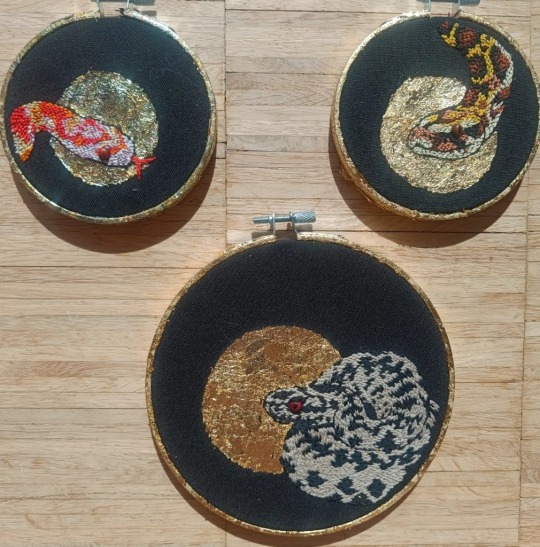
Set of three snake saints! Considering how best to find (a) home(s) for them. I may offer them at a convention in May!
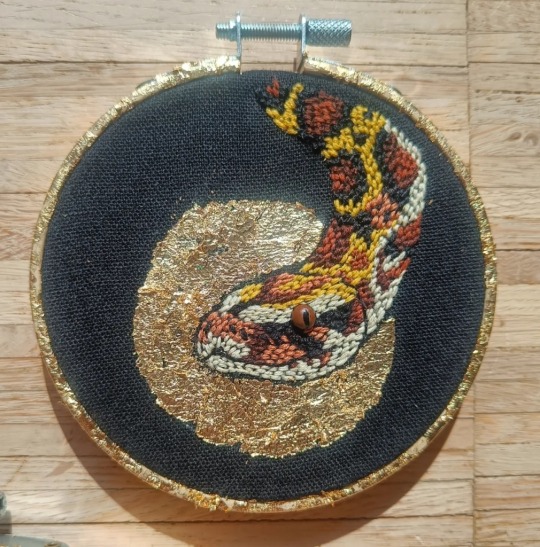
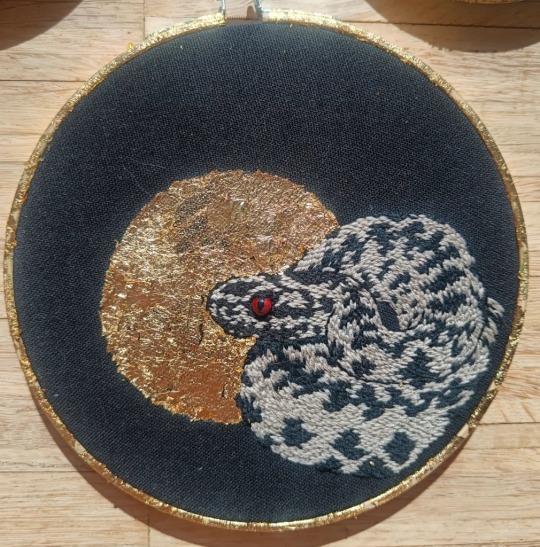
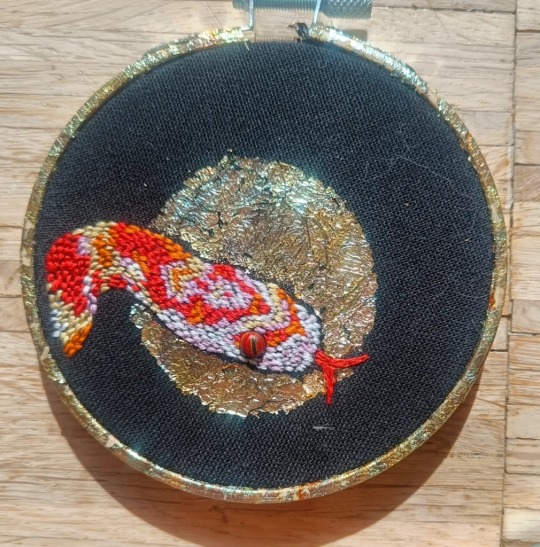
#embroidery#hoop art#snake#amelanistic corn snake#corn snake#burmeese python#python#kreuzotter#common european viper#gold leaf
35 notes
·
View notes
Text
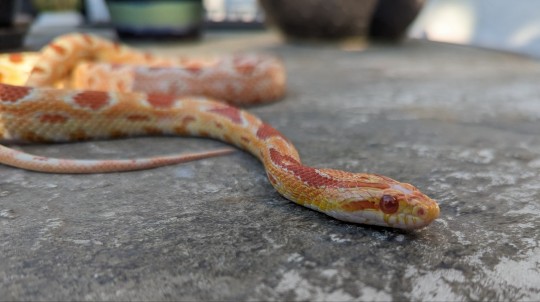
#Brian#snake#snakes#reptile#reptiles#reptiblr#corn snake#corn snakes#corn snake morphs#amelanistic corn snake
55 notes
·
View notes
Text
Okay so she’s a fallow deer right? I can’t choose a fur variant which do y’all think looks best (don’t take the outfit into consideration when make your decision I’m aware the white on white doesn’t look the best)
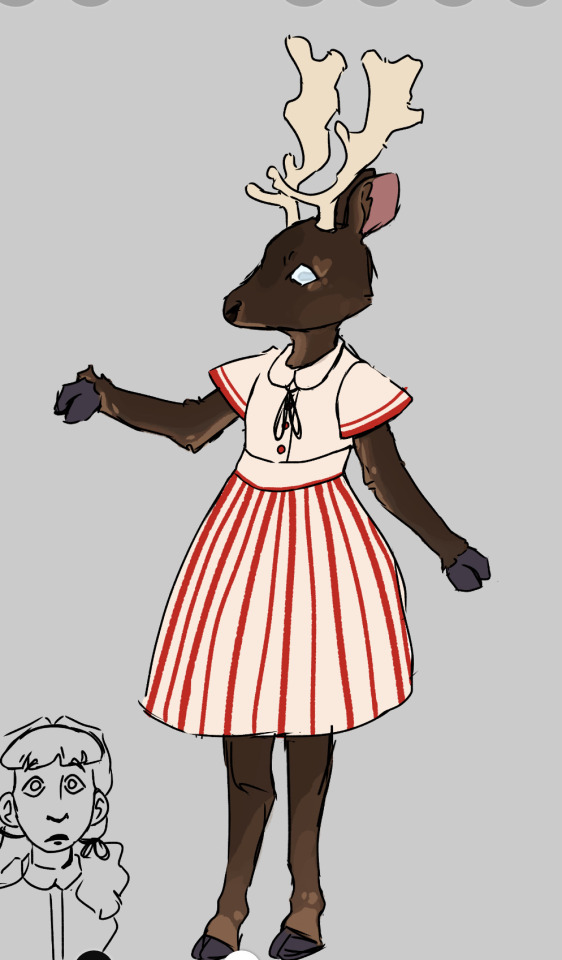



#non mutuals feel free to vote still I just need opinions#cam eats crayons#anthro oc#furry oc#deer oc#fallow deer#anthro character#anthro deer
28 notes
·
View notes